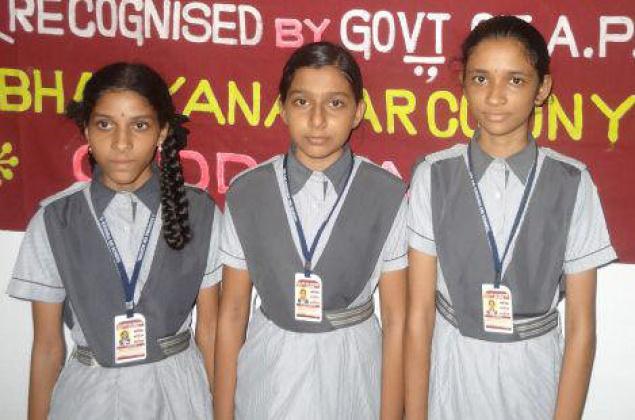
Three girls — K. Hematrishathi, S. Pranavi and T. Gayatri — studying ninth standard in Sri Sai Krishna English Medium High School in Kadapa have been chosen to take part in the second phase of National Aerolympics 2014 being conducted by the Aeronautical Society of India at Bangalore from November 27 to 29.
Guided by J. Phaneendra, Director of Student Resources Department of the school, the enterprising girls cleared the first phase of the National Aerolympics 2014 by submitting a project report on “Eyes and Arms in the Sky: Unmanned Aerial Vehicles” to the Aeronautical Society of India, Bangalore.
Sri Sai Krishna English Medium High School in Kadapa and Space Central School at Sriharikota in Nellore district were the only two schools from the State and among 24 schools across the nation chosen for participation in the second phase of the National Aerolympics.
Before Wright Brothers
Thalpade was the first to build and operate an unmanned aerial vehicle in 1895, eight years before Wright Brothers flew their aircraft, by adopting principles from Rig Veda, Bhashya Bhumika and Vaimanika Sastra, the students said in their project report. The famous Indian UAVs were Lakshya and Nishant, mainly used for military, policing and other specialised operations, they added.
Sage Bharadwaja in his book ‘Yantrasarwaswa’ made a mention of flying machines, techniques of offence and defence, diet and clothing of a pilot, metal and alloys, ‘rukma vimana’, its process of preparation, flying, classification of ‘vimanas’ and so on, they added recounting the history.
“Ironically Indians brushed aside the valuable information as myths, but foreigners adopted the data enshrined in the scriptures that portrayed the advanced technology used by our ancestors,” K. Hematrishathi, S. Pranavi and T. Gayatri said.
Taking advantage of the knowledge of ancient Indians on flying machines, the Mini Rukma Vimana Unmanned Air Vehicle (MRV UAV) designs were prepared. Lift fans configuration similar to ‘Rukma Vimana’, mentioned in ‘Vaimanika Sastra’, can be used to go through mountainous regions and fans are preferred other than wings for vertical take-off. Using the MRV UAV would make the missions much simpler and easier to carry out, the students concluded.
The students are engrossed in preparing a home report on “incredible habits” for submission in the three-day second phase of the National Aerolympics next month. The Kadapa students would participate in nine events including audio-visual quizzes on aviation, awareness of GK and current events and honours and awards, project and home reports and project presentation, collage making, cultural programme and surprise event in November.
source: http://www.thehindu.com / The Hindu / Home> News> National> Telangana / by Special Correspondent / Kadapa – October 12th, 2014